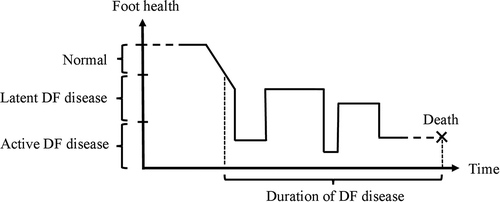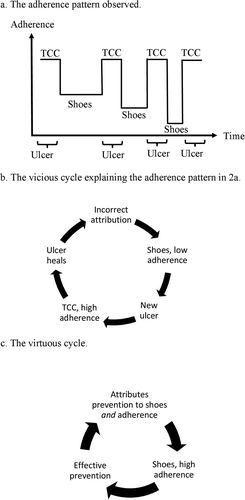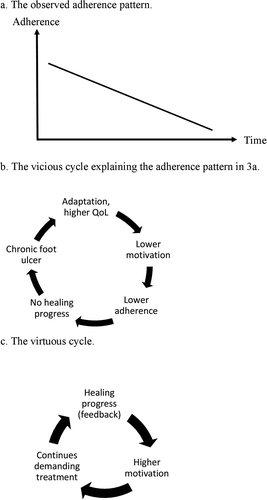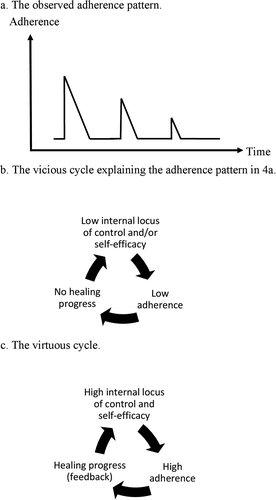Figures & data
Figure 1. Visualization of the process perspective on the diabetic foot (DF). The patient’s foot health starts at a normal level but at some point in life starts to deteriorate and foot health is categorized as latent DF disease. For the rest of the patient’s life, he or she remains in this category with possible outbreaks of active DF disease.

Figure 2. A patient is treated with a total contact cast (TCC) during the ulcer phases, but shows low adherence to wearing therapeutic shoes during remission (a). This can be explained by a vicious cycle (b) of too much emphasis on the type of devices and too little emphasis on adherence, leading to low adherence to wearing therapeutic shoes with reulcerations as a consequence. If the patient’s adherence to wearing therapeutic shoes can be increased long enough for him to see healing progress the vicious cycle can be transformed into a virtuous cycle of high adherence (c).

Figure 3. A patient with a chronic ulcer shows decreasing adherence to wearing her therapeutic shoes over time (a). This can be explained by a vicious cycle (b) of adaptation, higher quality of life (QoL), lower motivation, lower adherence, and chronic ulcer. If we can change the relative costs and gains in QoL implied by treatment and healing, thereby increasing her motivation for a more effective treatment regimen, a virtuous cycle may be reached where her motivation is further increased by giving her feedback on the healing progress (c).

Figure 4. A patient repeatedly tries to improve adherence to wearing his cast walker, but after each visit to the clinic his adherence quickly diminishes (a). This can be explained by a vicious cycle of low adherence, low internal locus of control, low self-efficacy, and unsuccessful treatment (b). If the treatment regimen is tailored to maximize his chances of success, thereby improving his internal locus of control, self-efficacy, and adherence, a virtuous cycle may be reached (c). Feedback on treatment progress is used to further strengthen his adherence.

